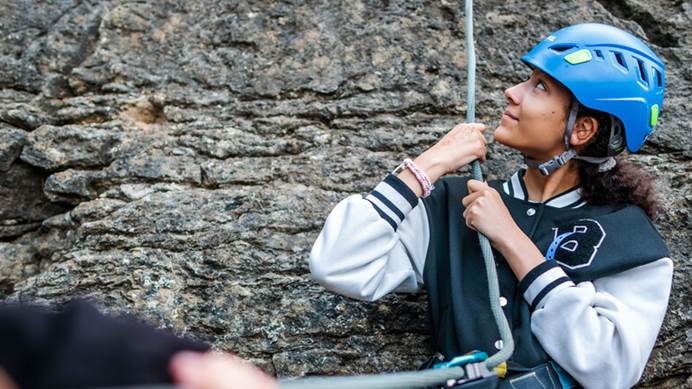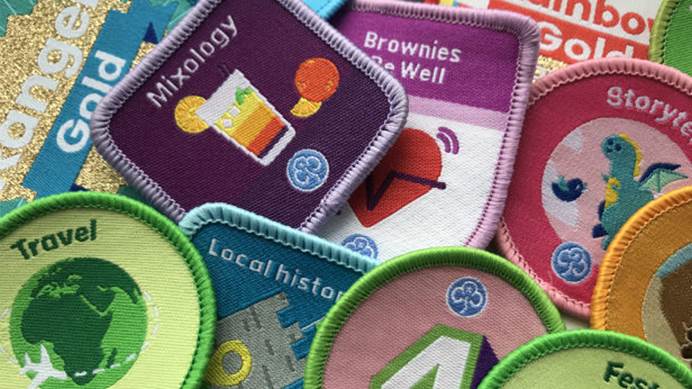Water safety
Be safe while you're having adventures on the water
Follow these tips and regulations to make sure you and the girls are safe on the water.
Make sure your activity provider is reputable
You can verify the quality of a provider by checking it has one of the following endorsements:
These don't apply in Northern Ireland, where you should ask your local outdoor activities adviser to recommend an approved provider.
If you're not using a recognised activity centre, you or the instructor must ensure you have any necessary permission - for example from the landowner or local water authorities - before any activity takes place. Your outdoor activities adviser can advise on local legislation.
You may need additional licences or permits to access some areas of water. See British Canoeing for more information.
Check the girls can do the activity
For most water activities, all the participants should be able to swim 50 metres and keep afloat for five minutes in the clothes normally worn for the activity. Participants can wear a buoyancy aid or life jacket to fulfil this rule if needed.
These rules may be relaxed when:
- Using public or licensed transport.
- It's clearly unnecessary, for example on water that's not classified, such as very shallow boating pools.
Life jackets and buoyancy aids
Life jackets and buoyancy aids are flotation devices that help keep girls safe on the water.
- Life jackets keep you afloat in an upright position with your head out of the water, even if you become unconscious.
- Buoyancy aids keep you afloat and allow full movement.
One of these personal flotation devices must be worn:
- By anyone who can’t swim
- If the activity instructor considers it necessary
- When abandoning ship
- If someone feels like they want to wear one
A life jacket can provide a higher degree of safety, so may be worn in place of a buoyancy aid, but a buoyancy aid should not be substituted for a life jacket.
Those using life jackets must be shown how to safely use and inflate them by the qualified instructor before taking part in the activity. Buoyancy aids and life jackets must be the right size for the participant and worn in accordance with manufacturer’s instructions and the classification of water.
Whether you need to use a life jacket or a buoyancy aid will depend on the nature of the activity, weather conditions and location. Follow the guidance on the activity page and speak to the qualified activity instructor. If you need more specific advice, please contact [email protected]
Before undertaking an activity, you need to make sure that any buoyancy aids and life jackets used comply with EU standards. These will have a CE mark on the label. If you are buying buoyancy aids and life jackets or the equipment in the centre has a different kite mark, please contact [email protected]
Be inclusive. If you have a participant with a medical condition that will affect her ability to swim, ensure that you inform the instructor and make provision to allow her to participate safely.
Only use safe boats and water craft
Each craft must:
- Carry safety equipment appropriate to its type.
- Not be overloaded.
- Be buoyant enough to stay afloat even if capsized or damaged.
If your unit or area owns the craft or has it on long-term loan
Every craft owned or on long-term loan to a Girlguiding unit or area for use in guiding activities must:
- Have a Girlguiding Boat Certificate, issued by the Outdoor Activities Adviser - she can obtain certificates from the Information Team.
- Have the certificate renewed annually.
The craft must be inspected by the appropriate Adviser, or a competent person nominated by her, to ensure it is in good, safe condition, and that it is suitable for the purpose and the class of water.
If the craft passes the inspection, the Outdoor Activities Adviser issues a Boat Certificate which is valid for 12 months. The certificate is used to obtain a Girlguiding boat registration sticker from the Information Team. The sticker should be displayed clearly on the boat.
If major repairs are carried out during the 12 months covered by the certificate, the craft must be re-inspected and if appropriate, a new certificate issued.
Insure all craft and equipment
Make sure that the craft and associated equipment (whether borrowed privately or hired from a commercial provider) are adequately insured. The insurance should be current, with a reputable provider (which you can check with FCA), and appropriate for the particular equipment and usage.
Girlguiding operates a Marine Contingency Liability policy. This policy covers Girlguiding’s legal liability for:
- Bodily injury to a third party.
- Loss or damage to third party property arising out of the use of a marine craft.
Make sure the environment is safe
Water activities must follow:
- Advice from the Environment Agency and local environmental health department.
- Regulations laid down by the managers of a local water authority or agency.
On the day, the leader should ensure that the water is safe for the activity. Water should be inspected for signs of visible pollution, such as rubbish, blue-green algae or chemicals. If either the leader or the instructor is not satisfied that the conditions are safe, the activity must be abandoned.
Be aware of waterborne diseases
The Leader must ensure each participant (or her parent or carer if the participant is under 18) is aware of the dangers and symptoms of leptospirosis and Weil’s disease and knows what action to take if infection is suspected. On the day of the activity, advise participants to cover cuts and grazes with waterproof plasters.
Leptospirosis and its more severe form, Weil’s disease, are extremely rare but can be caught by anyone participating in water sports, so it's worth being aware of the symptoms and methods of prevention.
Find out more about leptospirosis from the NHS website.
As well as the methods of prevention covered on the NHS website, participants should also:
- Use appropriate footwear to avoid cuts to the feet
- Shower as soon as you can after water activities
Watch out for blue-green algae
Blue-green algae is a bacterial organism that can be found in ponds, lakes and other inland water, or in the sea during summer. It has a distinctive blue-green colour.
Coming into contact with blue-green algae can cause any, or all of the following symptoms:
- Vomiting
- Diarrhoea
- Skin rashes
- Eye irritation
- Muscle or joint pain
If you experience any of these symptoms, visit your doctor and tell them that you've taken part in water sports.
Water safety training module
If you want more information on water safety, ask your local training coordinator for more information on water safety training.
More information on the water safety training module:




